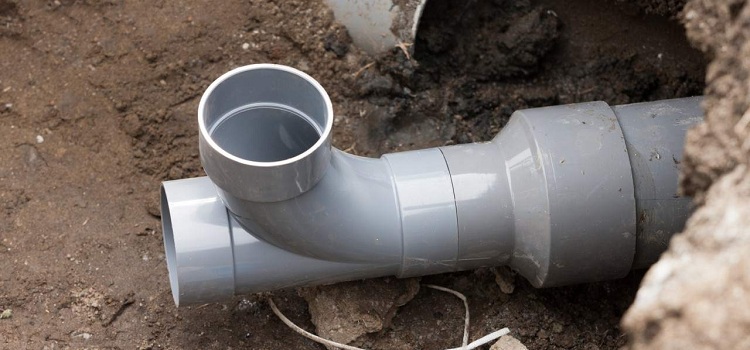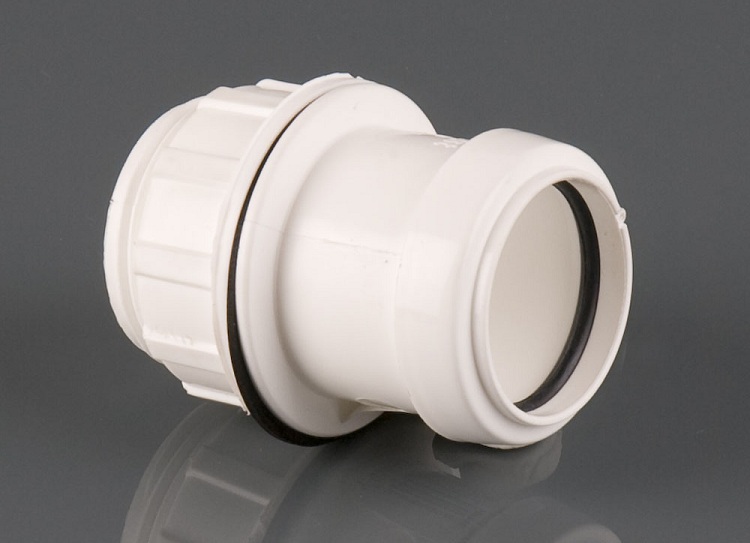Polypropylene couplings are a type of pipe fittings. They are used to connect parts of polypropylene (and other pipes) in a single design. Today, its field of application is quite wide: water supply and heating systems, technological pipelines, etc. The prevalence of this connecting part is explained by the ease of installation and other positive qualities that allow these products to occupy a leading position in the market of pipe fittings.
Content
Benefits of Using PP Couplings
Polypropylene products are lightweight, easy to transport and install. This material is environmentally friendly and safe for people.
In addition, PP couplings have several of the following advantages:
- noise insulation (during its operation, the noise of the transported medium is almost inaudible);
- products from this material do not conduct electric current;
- the walls of PP products are very smooth, therefore, salt coating does not form on them, which prevents the system from clogging and failing;
- They are resistant to aggressive chemical compounds. Such products can be used in technological pipelines at various enterprises;
- has good heat resistance;
- It is a durable material;
- the life of PP parts can reach 50 years.
Thanks to all these qualities, the polypropylene coupling remains one of the most popular parts for the installation of pipeline structures.
Where are polypropylene couplings used?
The production of these products is carried out from static polypropylene using a special engineering pressing method. This gives the product a lot of positive qualities, so the scope of PP couplings is quite wide. They are used:
- in pipeline networks;
- in sewer structures;
- in heating systems;
- when installing underfloor heating;
- in drainage structures;
- when installing ventilation systems;
- in pipelines transporting chemically active compounds;
- in the food industry.
In addition, PP couplings are widely used in irrigation and land reclamation constructions. They are used with equal success in the installation of pipe lines for residential, industrial and administrative buildings.
Coupling Features
The variety of polypropylene products allows you to create with their help a variety of joints in pipelines that differ in materials and characteristics.
Note! Conventional polypropylene products are joined to the pipes by welding. The result is a strong and tight joint that fixes the position of the pipes well.Such a joint does not need additional fasteners and is reliable and durable.
In some cases, it becomes necessary to join the polypropylene pipe with an old pipeline of some metal or other equipment with threaded parts. Then use combined couplings with various thread options.
Very popular is the coupling using a union with a union nut. The people call this product - "American". The presence of a union nut allows you to reliably fix the connected pipes.
The main types of polypropylene couplings and their features
The assortment of PP products is distinguished by its diversity. The diameter range for different types of couplings is generally from 20 to 110 mm.
By the type of action there are such couplings:
- connecting (straight);
- transient.
Connection using PP couplings can be:
- detachable;
- one-piece.
According to the installation method, they distinguish:
- welded;
- compression.
In addition, the functional features of polypropylene couplings can be:
- connecting;
- protective;
- repair.
Connection PP coupling
The name of this device speaks for itself. Such couplings are used when installing pipelines to connect individual sections of PP pipes. In this case, welding is used to connect the elements.
In addition, PP connecting fittings can also be used for reinforced polyethylene pipes. Such products are considered universal. The operating temperature for them reaches 95 ° C, and pressure indicators up to 25 atmospheres.
Polypropylene coupler
Transitional devices from PP carry out the docking of pipes with different indicators of diameters. These transitions are used in water supply networks, as well as in heating structures. The versatility of these devices allows them to be used for any type of pipe.
In addition, transitional PP products have good resistance to temperature extremes, aggressive environments. And also have good noise insulation performance. The operating temperature for transitional PP couplings is limited to 80 ° C. The pressure at which the operation of the product is permitted can go up to 20 atmospheres.
Combined PP coupler with external thread
This type of fittings is used in cases where it is necessary to dock two pipes of different materials (for example, PP and steel). In addition, with the help of such products, pipes are connected to various kinds of shutoff valves.
Combined couplings are used in domestic and industrial water supply and heating systems. The main advantages of this type of fittings with external thread placement include: ease of installation and compatibility with almost any metal parts from different alloys. They have good heat resistance (up to 95 ° C) and a working pressure of up to 25 atmospheres.
The coupling polypropylene combined with a female thread
PP products with an internal thread arrangement are used as well as the previous ones - for joining pipes from different materials and for connecting to stop valves. The fields of application and performance of the polypropylene combined couplings with internal thread placement are the same as those of the previous type. This is due to the fact that they differ only in the location of the thread.
Detachable polypropylene couplings with metal insert and union nut
Such parts are the most popular type of polypropylene connection fittings. This is due to the fact that this connection is detachable and, if necessary, it can be easily disassembled (for example, for preventive cleaning).A split sleeve is used in water supply and heating systems. The operating temperature of the medium is up to 95 ° C. In addition, they are able to withstand pressures up to 25 atmospheres.

A coupling with a union nut is a collapsible fitting that can be used in a plumbing or heating system
Some installation tips
When installing a polypropylene connecting product, you must be guided by certain rules. This will allow you to get a reliable and durable design in which there will be no leaks and other emergency situations. Consider some useful tips for installing software couplings:
- In order for the installation to proceed successfully, it is advisable to pre-perform the necessary marking on the connected elements.
- There are restrictions on the minimum temperature at which the installation of PP products is allowed. As a rule, this indicator is + 5 ° C. If the ambient temperature is below this level, then the connection may not be as reliable, and will not meet the necessary technical specifications.
- When storing and transporting PP parts, it is worth taking protective measures against mechanical damage. In addition, these products are not refractory.
- On parts that are made of polypropylene, threading is strictly prohibited.
Important! Before starting the installation, it is recommended to carry out preparatory work to clean the tools and the parts themselves from dirt, rust, paint and unwanted burrs.
The coupling, the material of which includes polypropylene, is characterized by a variety of assortments, which allows you to choose any connecting part for a particular case. When buying these products, you need to carefully study their features in order to choose the right model. Knowing the installation rules will help to create a reliable and durable connection.








